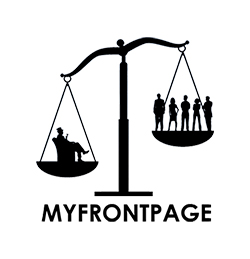Dated Brent prices are expected to remain relatively flat in the first half of 2023. On ample inventories despite persistent supply risks. With an upward swing likely later in the year as China demand picks up. This is due to the one-year anniversary of the war in Ukraine and altered crude oil flows.
According to S&P Global Commodities Insights’ most recent commodities brief, “Dated Brent prices in H1 2023 are likely to average around $80/b before recovering to $85-$90/b for H2 2023,” indicating that stocks will begin to decline in the latter half of 2023.
The oil demand is expected to increase due to nations like India and China. Who will also help to soften the blow of the most recent Western curbs on Russian supply.
The G7 said on February 3 that it would impose price ceilings of $100/b on imports of Russian products like diesel, kerosene, and gasoline. Which often trade at a premium to crude, and $45/b on goods like fuel oil. Which typically trade at a discount to crude.
According to S&P Global data, Europe has historically relied significantly on Russia for distillates, buying an average of 750,000 b/d of diesel from Russia in 2021.
Some of those diverted containers of Russian goods are send to Asia. A pricing incentive to remove barrels from the East of Suez region is anticipated to be created by the supply deficit in the West. While the EU goods restriction is anticipated to result in an increase in Russian refined product exports to Asia.
Due to increased emphasis on diesel production to capitalize on strong margins and rising demand from the US and Europe. Refiners in India may wind up expanding diesel exports to Europe.
As sanctions were placed on Moscow last year. India has also been able to access a large supply of inexpensive Russian crudes.
Russian seaborne oil exports reached an eight-month high in January, with exports to India reaching a record high of 1.3 million b/d, according to data from S&P Global Commodities at Sea.
China’s demand recovery
This year, China is anticipated to act as a catalyst for the expansion of oil demand. With the majority of this growth coming from growing transportation fuel consumption. As a result of the country’s relaxation of its pandemic-related restrictions.
According to an estimate from S&P Global, the world oil demand would increase by 2.2 million b/d in 2023 as a result of China’s openness, surpassing the level of 2019 for the first time at 102.6 million b/d.
Refining and market sources recently told S&P Global that because domestic demand in January was better than anticipated and local supply would decline toward March due to the maintenance season, China’s refineries will reduce clean oil product exports over the coming weeks compared to the levels seen in Q4, 2022.
Aviation traffic for passengers is still showing strong signs of improvement. According to S&P Global data, domestic flights in China grew 89% month over month in January, while foreign flights rose 15% within the same time frame.
According to JLC data, China’s private refining sector saw its total oil product sales increase 9.6% month. Over month to 6.8 million mt in January, setting a five-month high due to strong demand for car gasoline.
According to the JLC data, gasoline sales in January increased 13.4% month over month. To a 13-month high of 2.5 million mt. They had previously been higher in December 2021 at 2.67 million mt.
China has eased Restrictions imposed by COVID-19 are also likely to encourage infrastructure development initiatives. Which is positive for oil consumption as is the likelihood of a recovery in the nation’s economic growth. The IMF predicted on its website on February 3 that the economy will grow by 5.2% this year as opposed to 3% in 2022.
Supply Risks.
According to S&P Global, the increase in the world’s oil supply is anticipated to reach 4.7 million b/d in 2022, 2.1 million b/d in 2023, and 1.7 million b/d in 2024.
“Instead of the 0.9 million b/d predicted last month, we now estimate Russian supply disruptions to peak at 0.7 million b/d below pre-war levels in March. We see ongoing commitment by G7 to keep Russian oil flowing. Refined product restrictions starting on February 5 will have a more significant impact than recent crude product restrictions,” it added.
US strategic petroleum reserve sales of 26 million barrels are expected to be imposed by Congress in FY 2023. But whether this will actually happen is still very unknown.
S&P Global stated, “We no longer pencil in additional buybacks through 2024.”
In the meanwhile, rising oil prices make a very short-term OPEC+ cut improbable. However, despite Russia’s announcement that it would reduce output by 500,000 b/d starting in March as retaliation for western sanctions imposed over its invasion of Ukraine. OPEC+ ministers have so far stated that they are delaying raising their production quotas. While they wait for more concrete evidence of China’s economic recovery.
Russian oil production estimates from outside sources for 2023 differ greatly. Both OPEC and the International Energy Agency predict 10 million barrels per day.
The 23-nation OPEC+ coalition, which co-chaired by Russia and Saudi Arabia, is an important supporter of OPEC and will meet in June to discuss production policies. As of now, the alliance has adhered to a commitment made regarding production quotas. That are expected to run through the end of 2023. OPEC+ output has been held below pre-pandemic levels thanks to the quotas. Which represented a 2 million b/d reduction from September levels.
One year later, the Russia-Ukraine conflict is still going worse. And there is no obvious winner between the two, leaving the future of the crude oil markets in limbo. Strong fundamentals, such as falling inventories and projections of rising demand in China. Will maintain the market, nevertheless, until further signals come in.
















